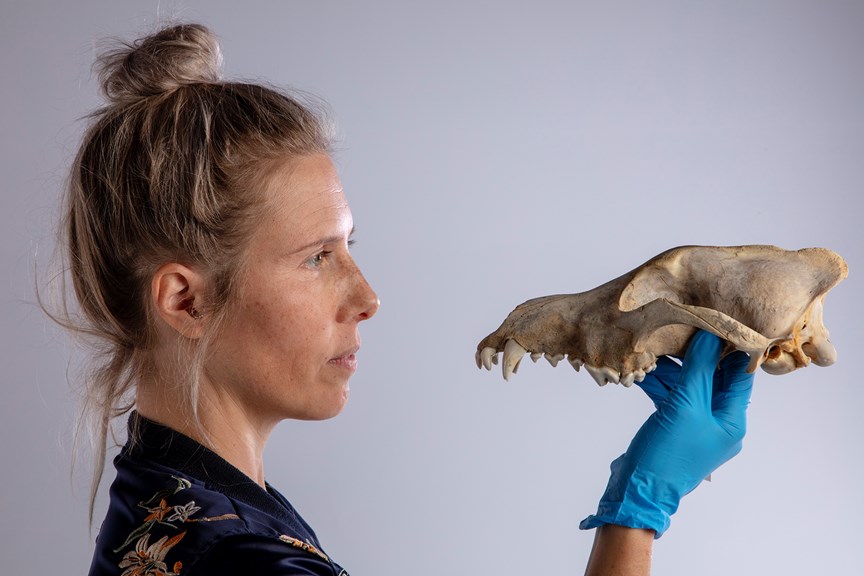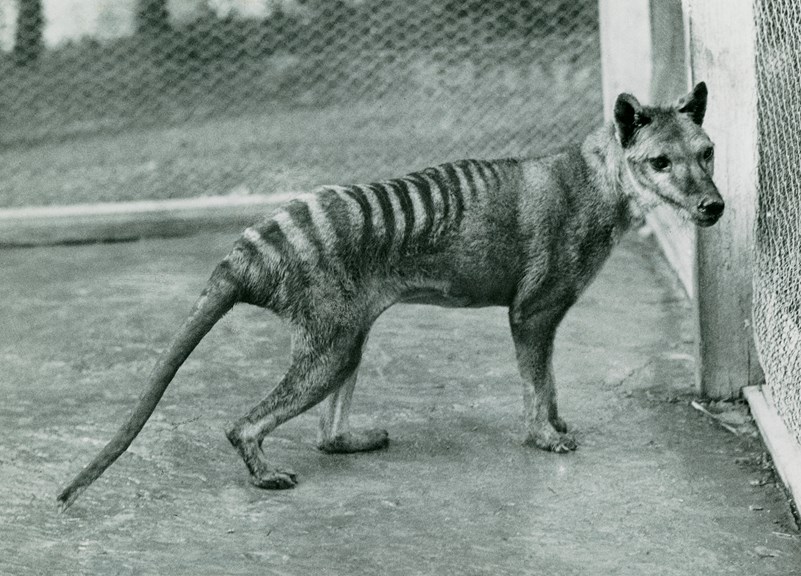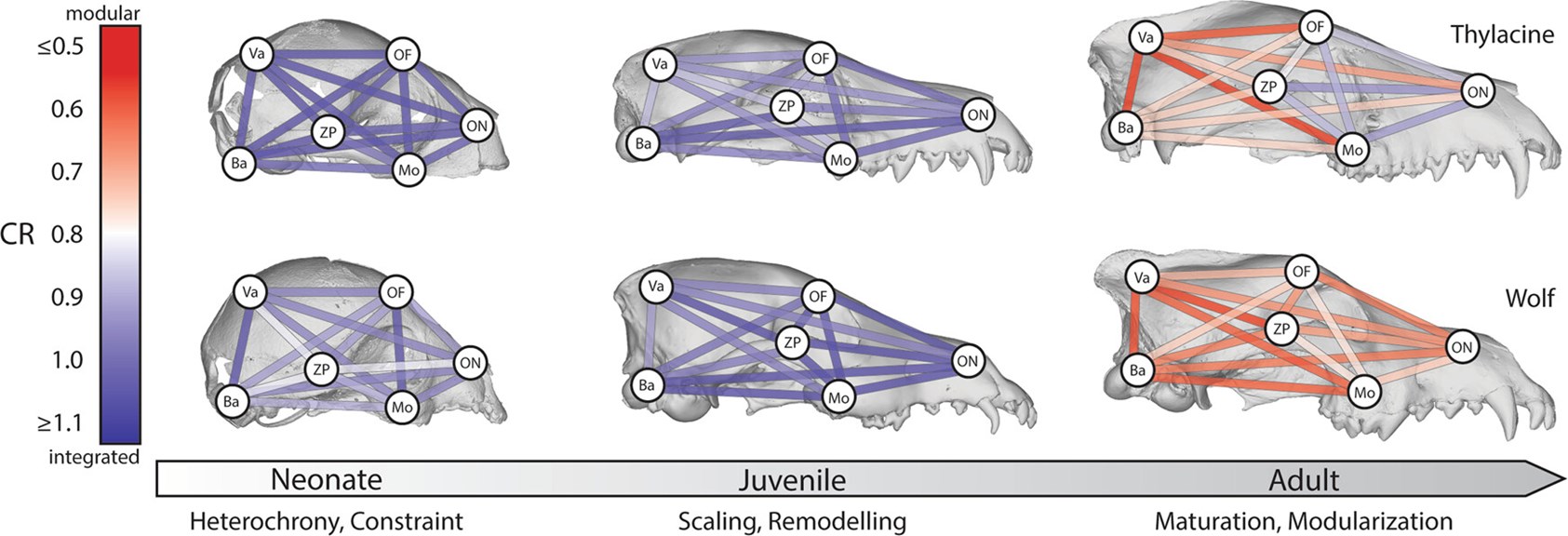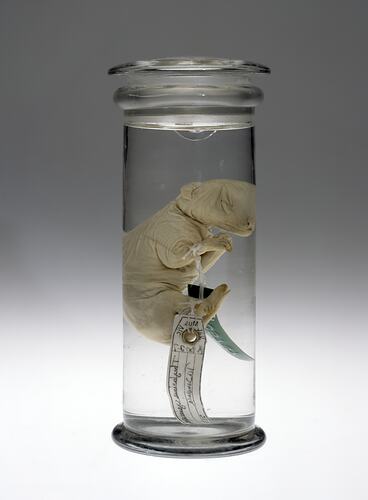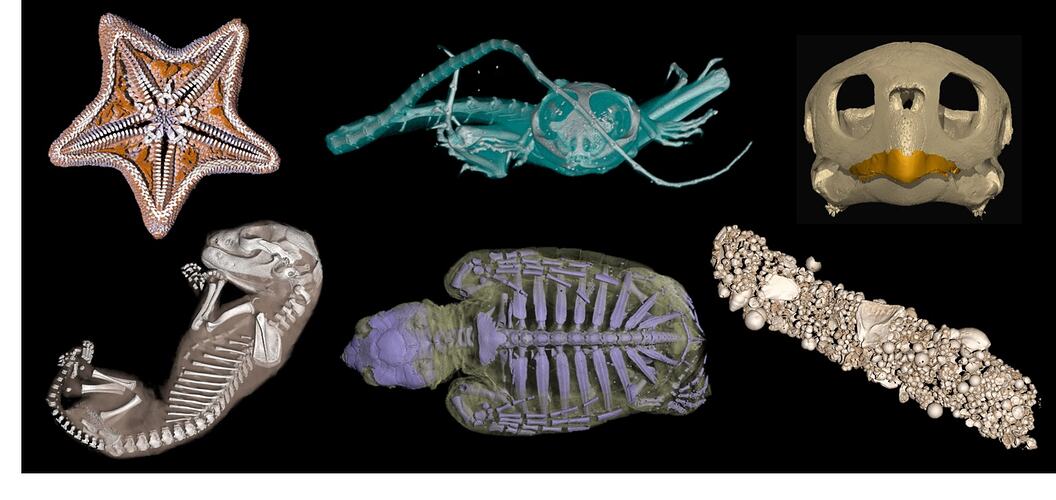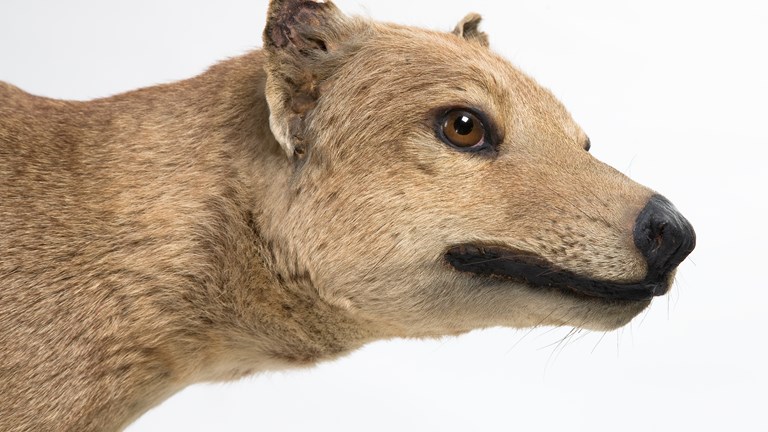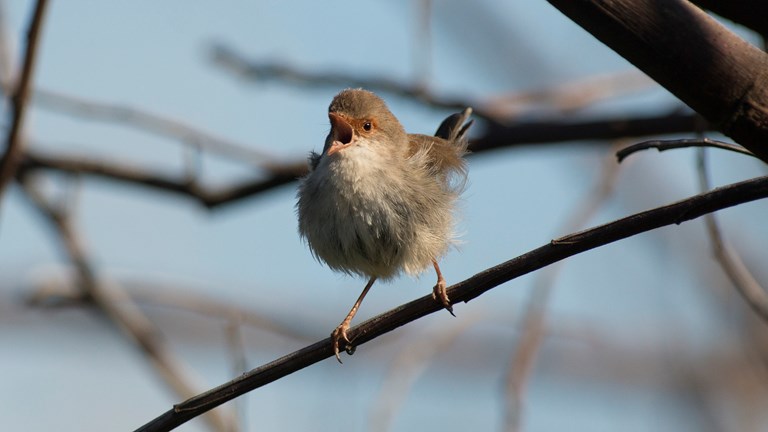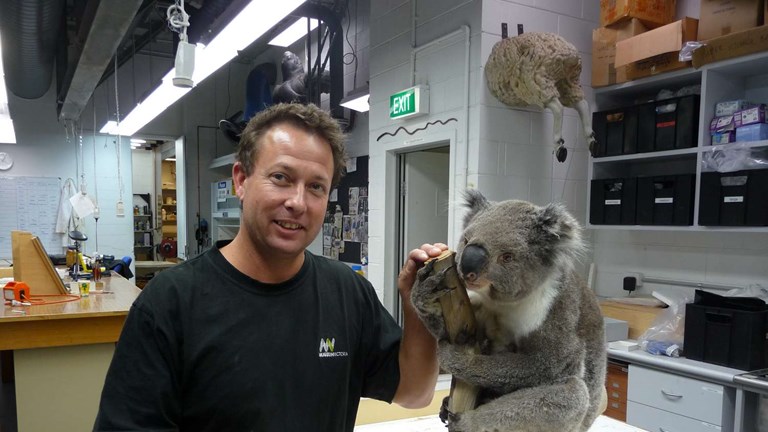Tasmanian Tiger: lessons from the last of its kind
Museum specimens are enabling new discoveries about extinct species, long after they are gone.
How is it possible that Tasmanian Tigers and wolves—two vastly different species that last shared a common ancestor during the Jurassic period, over 160 million years ago—evolved to look so similar?
That is one of the questions a team of scientists have been exploring, using rare and irreplaceable specimens from Museums Victoria’s collection.
The researchers have been able to show that the skulls of both of these large carnivorous species were similar at birth—not just in later life, as previously thought.
One of the remarkable things about this discovery is that the Tasmanian Tiger, or thylacine (Thylacinus cynocephalus), has been extinct since the last animal died in a Hobart zoo in 1936—more than 80 years ago.
The fact that modern-day researchers are now studying it in such detail, is a testament to the value of museum collections and their ability to give us new insight into worlds beyond our own lifetime.
‘I always say it's ironic that we know more about their death than we ever knew about them in life, despite the fact that we lived side by side with them for millennia,’ says Dr Christy Hipsley, evolutionary biologist at Museums Victoria and one of the study’s authors.
‘Unfortunately, these fascinating animals were never systematically studied in the wild.
‘What we're trying to do with the few precious specimens we have is to reconstruct their life histories—for example the ways they moved, what they ate and how they hunted.
‘And in this story, we really wanted to know—how did they grow?’
From ‘jellybean’ to iconic apex predator
Tasmanian Tigers and wolves represent one of the most striking examples of convergent evolution—where two species, that are not closely related, independently evolve similar traits.
Unlike wolves, Tasmanian Tigers are marsupials—they’re born as what Dr Hipsley describes as ‘jellybeans’, mostly undeveloped except for the forelimbs and mouth bones that allow them to crawl to their mother’s pouch and drink milk.
What Dr Hipsley and other researchers have been able to show, based on museum specimens, is that the Tasmanian tiger compartmentalised the development of different bones so they could perform different functions over the animal’s lifetime.
That means that while parts of the mouth needed to work together in newborn Tasmanian Tigers to attach to the mother’s teat in the pouch, they could also change shape later in life to eat meat.
That is remarkable for a marsupial.
Marsupials usually adhere to a fixed growth pattern—their mouth and limbs are among the first regions to ossify, or turn to bone—meaning they have never been able to evolve the diverse range of body shapes seen in placental mammals, like whales, bats or wolves.
The Tasmanian Tiger’s growth, however, appears to be dictated by its adaptation to carnivory.
‘They're able to grow a long snout with lots of teeth, and they develop a broader cheek region to make room for muscles to bite down on things,’ says Dr Hipsley.
The researchers—from Museums Victoria, the University of Melbourne and Flinders University—compared the skulls of Tasmanian Tigers to 35 Gray Wolves (Canis lupus) of similar ages, to pinpoint when and where anatomically during their growth they begin to develop similar features.
They also compared the skulls to five other marsupial species, including Brushtail Possums, Koalas and Eastern Quolls.
‘We thought that [Tasmanian Tigers and wolves] would be born very different and then converge…but it's actually parallel. They're born pretty similar, and they remained pretty similar. I guess that just shows that those adaptations are so profound that they can overcome marsupial constraints.'Dr Christy Hipsley
‘It's an amazing story of, I don't know if you would say nature versus nurture, but where you have really strong developmental constraints that can be redirected to do something else.’
Dr Hipsley says having access to well-preserved specimens is the only way to do this kind of research.
‘There were very likely other carnivorous marsupials that developed in a similar way, but we don't have the resources to study them at the same level of detail because they’re fossils,’ she says.
‘We focus on the thylacine because it's the only large marsupial predator that was alive in modern times, but all throughout Australian history there were actually many different marsupial predator species…some as big as lions.
‘So this work can provide insight into not only the development of the thylacine as a single species, but a whole range of extinct predatory marsupials.’
‘The new microscope’
So how do you study a species like the Tasmanian Tiger, long after it has gone?
There are just 11 preserved specimens of Tasmanian Tiger pouch young in the world, and it’s unlikely there will ever be more.
‘We sample these few precious specimens over and over and over again, which also comes at a cost because every time you take it out of its safe little package and handle it there is a risk, right?’ says Dr Hipsley.
To mitigate this risk, scientists have turned to micro-CT scanning—a process that creates highly-detailed 3D images of an object, both inside and out.
In the case of Tasmanian Tigers, Dr Hipsley and her colleagues have already used it to map the internal anatomy of a young joey—known in Museums Victoria’s collection as specimen C5757.
It was this same specimen that allowed researchers to sequence the Tasmanian Tiger’s genome—the most complete blueprint for any extinct animal—which proved its closest living relative is the humble numbat.
3D imaging of specimens like this allows scientists to study them in great detail, without the need for dissection.
‘CT scanning is revolutionary for museums especially—it's the new microscope but it allows you to also see inside the specimen without harming it,’ says Dr Hipsley.
And it’s no one-trick pony—3D imaging can be used for completely different areas of study, even the controversial subject of the Tasmanian Tiger’s diet.
‘Researchers have looked at the thylacine’s jaws, again using CT scanning, to model how hard could they bite down, and if they could crack bone,’ says Dr Hipsley.
Thylacines were hunted to extinction by humans, supposedly because of the threat they posed to sheep, but even that is up for debate.
‘And from those studies it seems their reputation as sheep killers was highly unlikely—they just don't have strong enough bite forces to be able to take down large prey.
‘So even something as simple as what this animal ate is still a question mark, but these kinds of studies can get us a bit closer to making the best guess in lieu of ever being able to see it again in life.’

